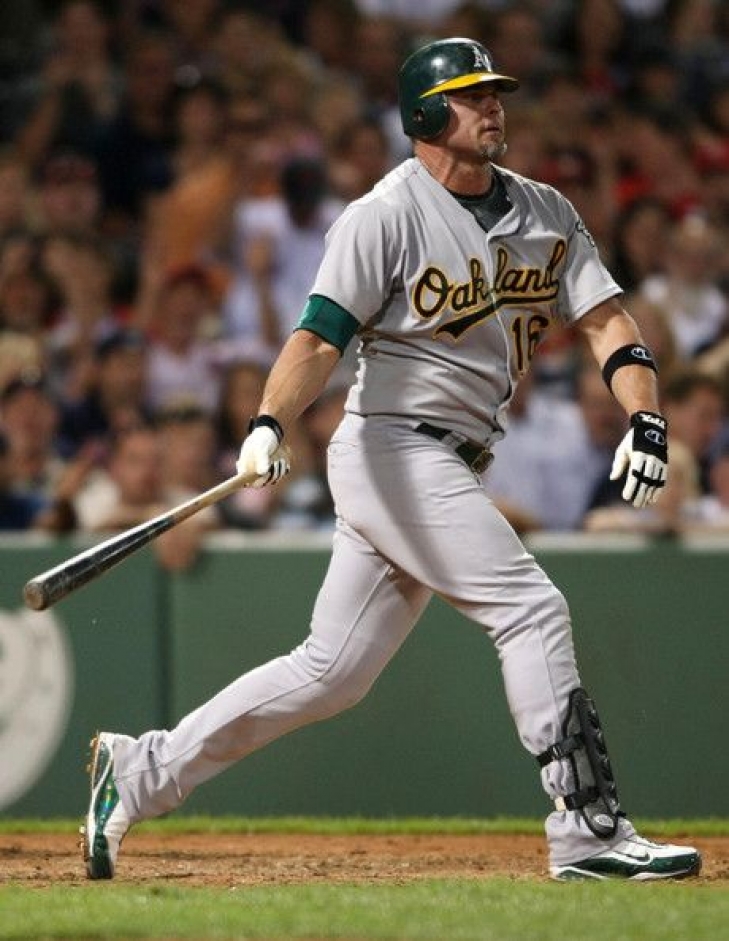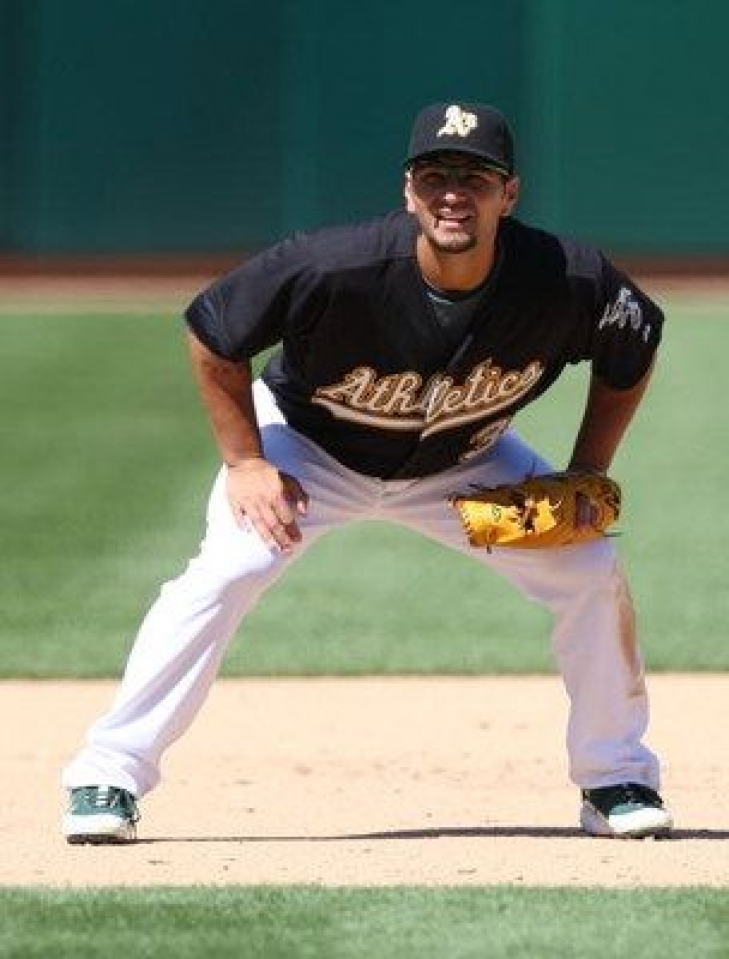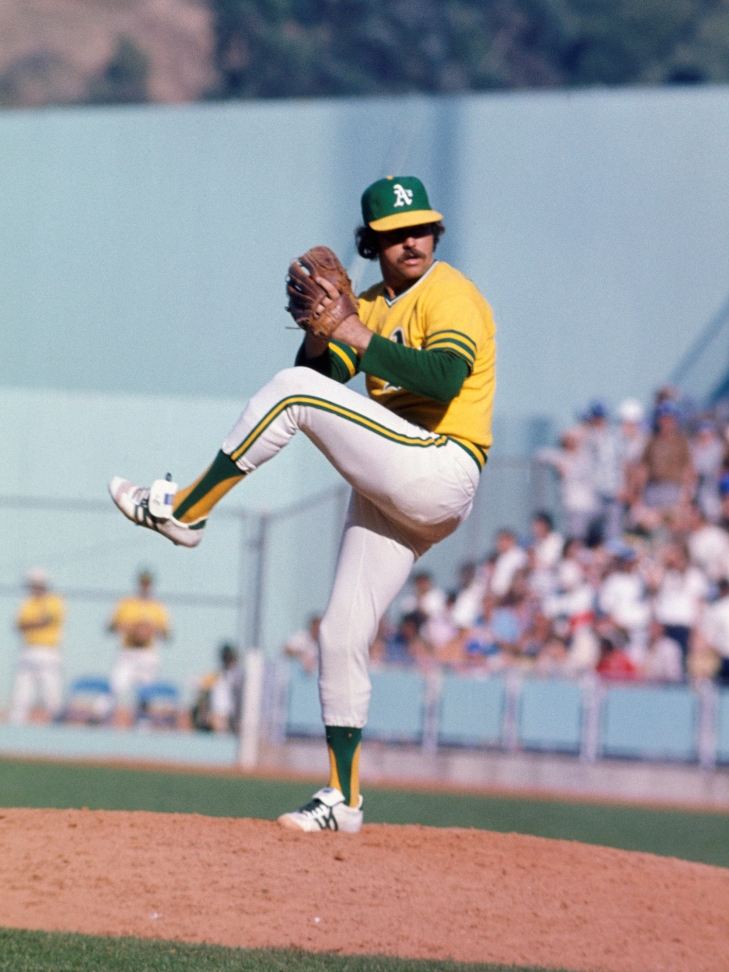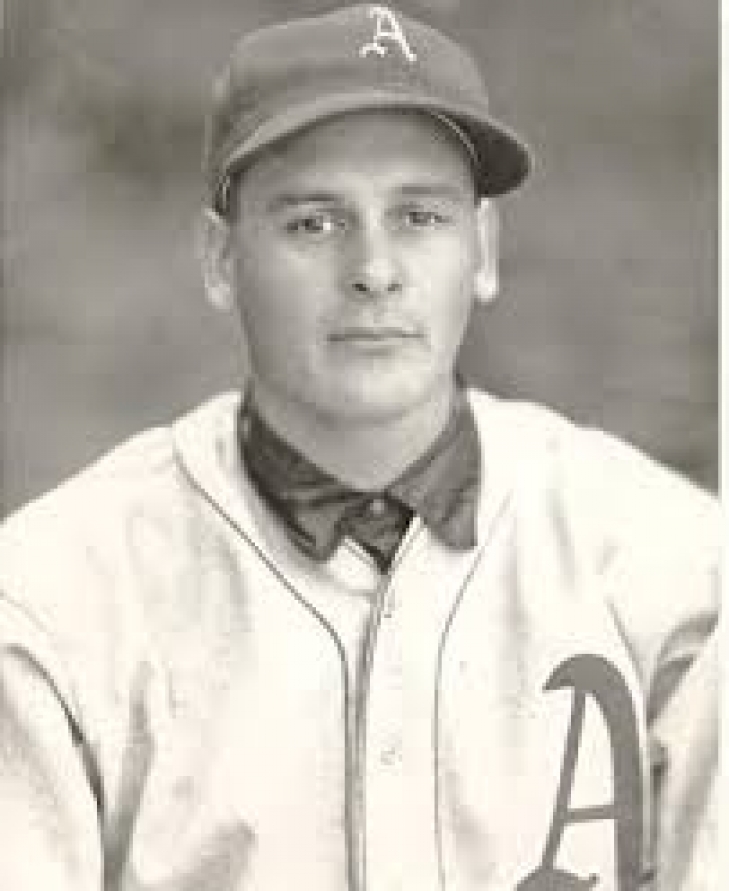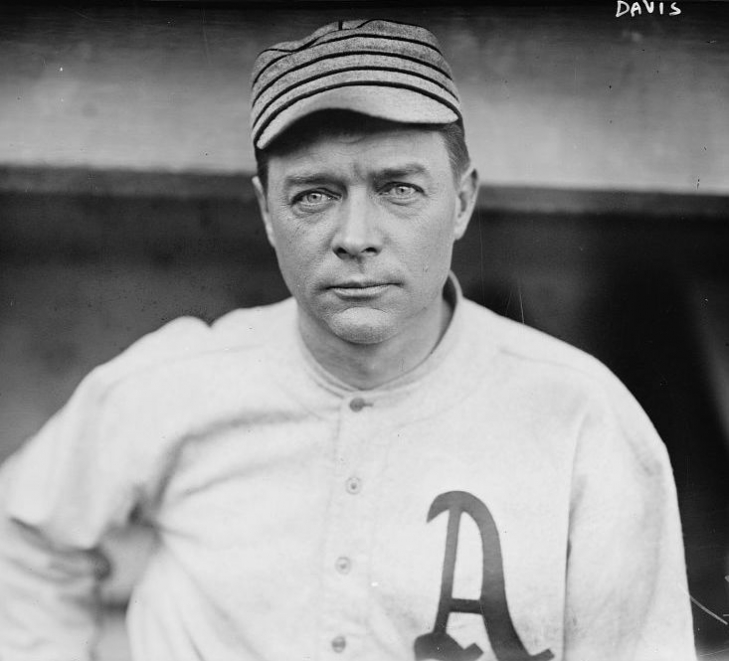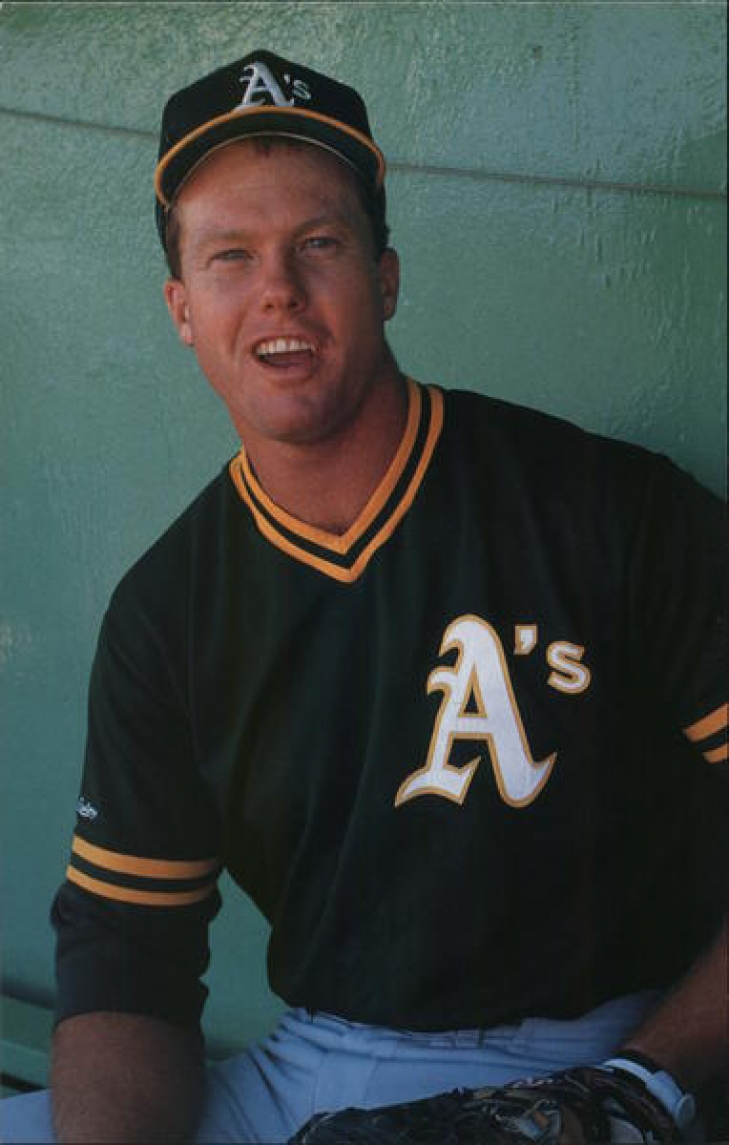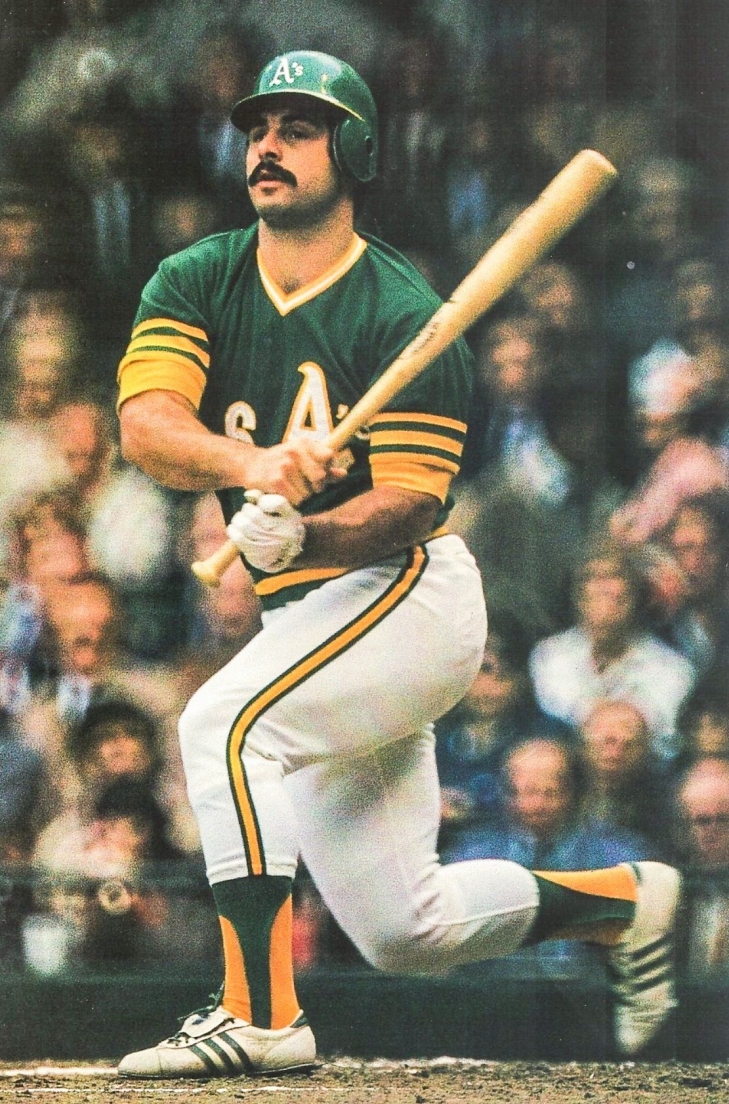25. Tim Hudson
Tim Hudson was with the Oakland A's for the first six seasons of his MLB career. Hudson was one of the highest regarded pitchers in his time in Oakland, and his 92-39 record there was one of the highest winning percentages in baseball.
26. Jason Giambi
It can be argued that this may seem like a very high rank for Jason Giambi, as a lot of his career has been viewed as a disappointment. It shouldn’t be, as when Jason Giambi played for Oakland, he was one of the best batters in the game.
18. Mickey Cochrane
Mickey Cochrane was sought after by Connie Mack, who pried him from Portland of the Pacific Coast League after the 1924 season. Mack wasted no time inserting Cochrane as a starter for the Athletics, and he was quickly entrenched as one of the best hitting Catchers of the game.
20. Jose Canseco
Let’s forget about some of the things that made Jose Canseco famous (or infamous). The steroid use. The admission of steroid use. Throwing other players under the bus by (accusing) discussing their steroid use. The boxing. Madonna. The baseball that bounced off his head for a Home Run.
28. Rube Walberg
Rube Walberg holds the dubious distinction of serving up the most home runs to Babe Ruth with 17. That might seem like a strange way to open, but remember the Athletics thought enough of him to keep putting him on the mound.
23. Eric Chavez
Eric Chavez may not have been chosen for an All-Star team over his long career, but in his prime, he was one of the better all-around Third Basemen in the American League. That prime was with the Oakland A’s.
21. Dennis Eckersley
When the Chicago Cubs traded Dennis Eckersley in 1987 to the Oakland A’s, this was considered a demotion, or even a last chance of sorts. “Eck” had been a starter in the Majors since 1975, and he had made two All-Star Games, but his alcoholism was threatening to take him out. Oakland’s Manager, Tony LaRussa, envisioned him as a set-up man, which Is the role he took until Jay Howell, their existing closer got hurt. Eckersley took on that new position, and it would eventually put him into the Baseball Hall of Fame.
19. Vida Blue
Vida Blue was a unique pitcher in that he was a southpaw who was known for his power. Blue first cracked the Athletics roster in 1969 but would spend most of that year in 1970 in the minors. Oakland thought they had something in Blue, who would begin 1971 as a starter. What happened that year was one of the most incredible campaigns ever for an Athletics Pitcher.
16. Catfish Hunter
Jim “Catfish” Hunter received his colorful nickname from his team owner, Charlie O. Finley, who felt that gave his pitcher character. That was a recurring theme for Finley, who did similar things with other players, but this is the story about the star pitcher for Oakland in the early 70s.
42. Jack Coombs
For the first four seasons of his Major League career, Jack Coombs was an average Pitcher at best and did not have any remarkable moments. He was 35-35, and in 1910, his season started so poorly that he was demoted to the bullpen. The legend has it that he rediscovered his overhand curve, and he went on a tear that had no equal in Athletics history.
15. Bob Johnson
Bob Johnson was a very good player who arguably had the misfortune of playing for the Philadelphia Athletics at a time when they were not that good. As such, many of his accomplishments went unnoticed, but that is one of the reasons why we are here.
17. Harry Davis
Harry Davis began his pro career in the National League in 1895, and other than leading the league in Doubles in 1897, it was reasonably non-descript as it was spent with four teams (New York Giants, Pittsburgh, Louisville, and Washington). He played for the minor league Providence Grays in 1900 and was ready to call it a career when Connie Mack came calling. Mack convinced Davis to play for him, and it was a win-win for both parties.
10. Mark McGwire
Mark McGwire may have set the single-season Home Run record when he was with the St. Louis Cardinals, but it was in Oakland where he first became a star and would have his greatest overall success.
12. Sal Bando
Sal Bando played most of his career with the Athletics, and there was a time when he was considered one of the best Third Basemen in the American League.
7. Reggie Jackson
The heroics of Reggie Jackson may have been at the most viewed in New York City, but it all began with the Athletics.
11. Bert Campaneris
Bert Campaneris made his debut with the Kansas City Athletics in 1964, and he would secure the starting Shortstop role for the team, which would be a role he had until he signed with the Texas Rangers after the 1976 season.
13. Eddie Rommel
Signed by Connie Mack before the 1920 season, Eddie Rommel would find a home in Philadelphia, which would be the only team he would play for in the Majors.
9. Chief Bender
Charles Albert “Chief” Bender signed as a Free Agent before the 1903 Season with the Philadelphia Athletics, and the "City of Brotherly Love" would be his home for the next 12 seasons. Bender would be considered one of the nicest guys of the American League, but more importantly, he was one of the better hurlers in the game.
6. Eddie Collins
Eddie Collins was signed by the Philadelphia Athletics in 1906, and by 1909 he was the team's starting Second Baseman. That year he would swipe 63 bases and bat .347, the perfect showcase of what was to come. Collins was part of an excellent Philadelphia team that in 1910 would win the World Series, and that season he would lead the AL in Stolen Bases with 81, which made him the first player to ever tally the 80 plus mark.
5. Al Simmons
Al Simmons joined the Philadelphia Athletics when he was acquired from Milwaukee of the American Association before the 1924 Season. He would have a great rookie season with 183 Hits and a .308 Batting Average, so it was clear that he was a good hitter, but what he would do afterward would make his first year in the Majors look, pedestrian.



